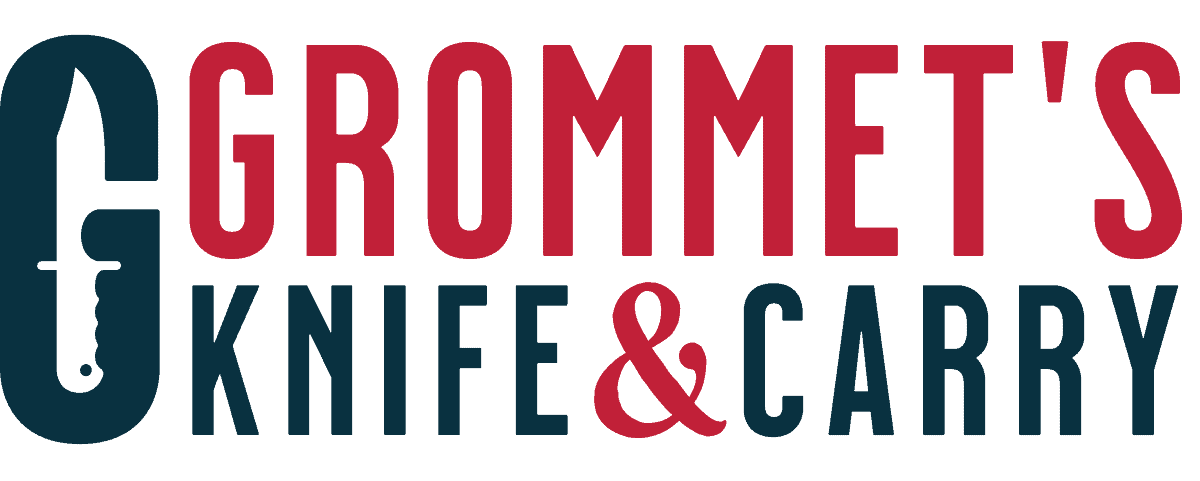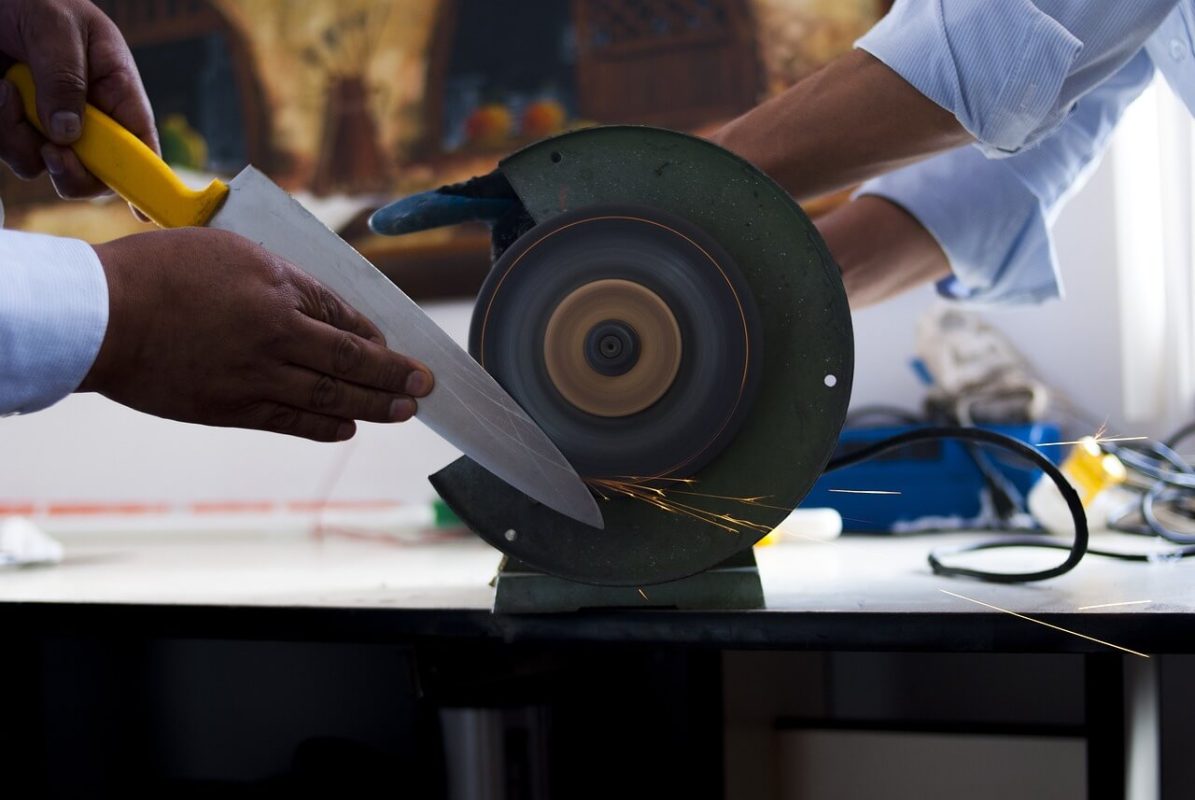Knife Sharpening
How to Sharpen a Knife with a Whetstone
A whetstone is undoubtedly one of the best tools for sharpening a knife. The reason for this is simple: It’s the only tool that sharpens your knives in an optimal way without removing too much blade material. That is, of course, assuming you use the correct stone for the work.
By choosing the right whetstone, your knives will last longer and so will their sharpness. Electric sharpeners usually peel off quite a bit of blade substance. This is a real waste if you’re dealing with valuable knives you may have purchased at a knife store either in person or online.
A whetstone is an ideal tool used to maintain your knives, and using one isn’t too difficult to get the hang of. Follow the step-by-step process below and enjoy your sharpened knife.
The sharpening process
Sharpening stones can bring dull knives back to life and maintain your everyday knives. Using a whetstone is considered an art, especially in Japan where knives are given great importance.
Using a whetstone can be intimidating for people who aren’t used to the process, but once you’ve mastered it, you’ll see that it’s worth it. The more you practice and use a whetstone, the more you’ll appreciate this tool.

Before the sharpening process
First, make sure your work surface is flat. Then place the stone parallel to your body on a stable work surface, cushioning it with a slightly damp cloth. If necessary, raise the whetstone by placing it on an upturned container. This will allow you to move it easily when sharpening.
During the sharpening process
Start by positioning the tip at the top of the whetstone. Remember to keep your angle consistent. Make sure that the entire surface of the first side of the knife blade will come into contact with the stone. Run the blade over the stone in an arc shape. Repeat the stroke six to twelve times or until you get a satisfactory result.
Sharpen the second side of the knife in the same manner. The number of strokes on each side of the blade doesn’t necessarily have to be the same. It will vary depending on the blade profile and/or if you want to give a left or right-handed predominance on a blade. This is what we call asymmetrical sharpening.
Using the right sharpening angle
To sharpen western knives with a whetstone, begin by tilting the knife blade 16-18º from the whetstone. To create slight pressure, grasp the handle of the knife with one hand. Hold the fingers of your other hand on the side of the blade.
To sharpen Japanese knives, use the traditional Asian push method. Angle your knife at 10-15º from the whetstone.
For both sharpening methods, check the blade until you feel a slightly raised burr. Then, repeat the chosen method on the other side of the blade.

After the sharpening process
You can test your knife’s sharpness using a piece of paper. If it cuts cleanly through, your knife is adequately sharpened. The final step in the process is to clean the sharpening stone according to the manufacturer’s recommendations. This will remove stone particles before any future use. If stored directly after use without cleaning the stone or allowing it to dry out, it may become moldy.
The different kinds of whetstones
A whetstone usually consists of a base stone, abrasive particles, and a binder. The abrasive particles are responsible for the sharpening of the knife. During the sharpening process, small pieces break off the abrasive particles. These abrasive particles can be of different materials. The most common are carbide, ceramic, alumina, and novaculite. The strongest whetstones are diamond-coated, which means they don’t wear out.
Choosing a whetstone can be complicated with the variety of materials and grits available. It’s important to take a little inventory before you start. By choosing the right one, you’ll be able to maintain your favorite knives over time – with much more efficiency and ease.
Stone textures
The materials used for sharpening stones and the different types of grit available can be a source of confusion for beginners. This decision will be essential for the durability of your knives over the years to come. The three main whetstone textures are:
- Corundum powder – Corundum power is an extremely hard material and creates a coarse texture. A coarse stone is recommended for knives with a high blade hardness index, or if your edge is very dull. These are the types of stones that you’ll generally find in specialized shops.
- Natural stone – The raw material of these stones comes from quarries such as those in Arkansas. They’re made of Novaculite, a type of quartz found only in this region of the United States. These whetstones are mainly used for the maintenance of table knives. They’re also very long-lasting. These stones are available in many different textures, from course to the finest of stones, meant for finishing and polishing.
- Diamond – The stone surface is coated with diamond powder and is very abrasive. It allows the sharp edge to be straightened quickly and efficiently, though because this is often the coarsest of textures it will take off more material than a smoother stone, so care is warranted.
Another important element is the binder that holds the abrasive particles together. Synthetic resin is frequently used for this purpose. Magnesium and ceramic are also common bonding agents. Other possible binders are inorganic compounds, nickel, synthetic sapphire, and mica.
Whetstone lubricant
Most often, whetstones work best when they are, well, wet. Some types of stones like diamond whetstones don’t require water, but you do get a better result when you dampen them.
Using a wet whetstone is almost always recommended. When you use water or oil with your whetstone, the fluid removes the fine debris produced by sharpening. This debris is known as swarf and can cause scratches on your knife.
To wash away the swarf, whetstones need water or oil to ensure proper sharpening. The material of the whetstone determines the soaking time. As a general rule, manufactured materials absorb water faster than natural stones. Those can take up to two hours to soak.
The best kind of lubricant for your whetstone depends on several factors:
- The whetstone material
- The type of knife
- The blade material
- Your level of sharpening expertise
- The desired result
Grit sizes
Another distinguishing element of whetstones is grit size. Grit size is divided into three main levels – high, medium, and finer.
A high gritstone (80-400) is for knives that need thorough care. They’re primarily responsible for properly shaping the blade. They’re also great for removing microscopic cracks on the blade surface. So it’s suitable for blades that have never been in contact with a stone and need a big overhaul. This grit level can restore the correct geometry which results in optimal sharpness.
Medium grit stones (500-3000) are the most popular. They’re used for regular honing about once a month. This removes microscopic burrs from the side edges of the knife. Those can contribute to tugging the edges of the objects being cut. Regular use of this stone will make the cut smooth without having to put too much force into it.
Lastly, we have the finer grit stone (above 3000) intended mainly for serious knife enthusiasts. The finer grit is used to finish and polish the cutting edge of the blade. It can polish so thoroughly that you can almost see your own reflection in the blade. With a simple, homemade sharpener, this mirror effect would not be possible.

How to test knife sharpness
The goal when sharpening a knife is to make it razor-sharp. But how do you know if your knife is really getting that sharp? Is it as sharp as you want it to be? The best test of a knife’s sharpness is to use it and see how it performs. But what item should you cut to test it?
The paper test is a great trick to tell you if your knife is sharp enough. If you can slice paper effortlessly with your knife and it doesn’t snag or tear, then your knife is very sharp.
There are, however, a few levels of sharpness far beyond the paper slice test. But a knife that can pass the paper test is still very sharp. This test can also be used to see if there are any remaining dull/damaged sections on your knife blade. You can keep sharpening until you have a perfectly sharp blade.
Get in touch with Grommet’s Knife & Carry
Knives require proper care to work efficiently and safely over time. Still not sure about what kind of whetstone you should get? Don’t hesitate to contact us – we can guide you according to your knife and desired result. And if you aren’t looking to sharpen your own knives, the staff at Grommet’s Knife & Carry offer professional sharpening services.
 PAY IN FOUR INTEREST-FREE PAYMENTS WITH SEZZLE
PAY IN FOUR INTEREST-FREE PAYMENTS WITH SEZZLE

